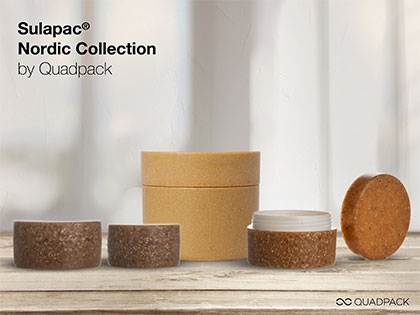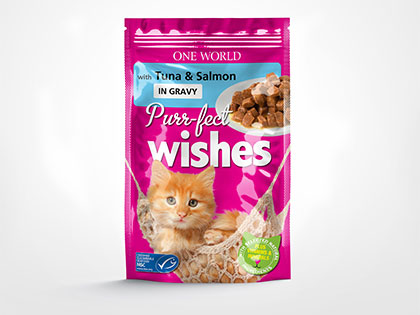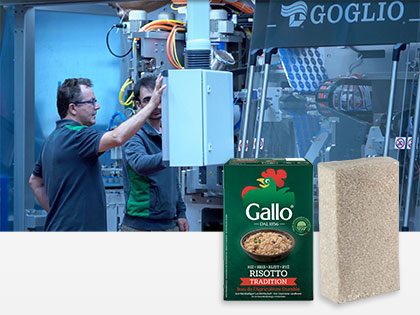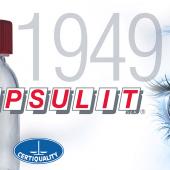From Research to the Shelf - June 2021
Monthly showcase of packaging solutions to communicate, protect and distribute commonly used products.

Microplastic-free cosmetics jars
Part of Quadpack’s QLine product portfolio, the Sulapac® Nordic Collection offers a sustainable alternative to conventional plastic packaging for water-based formulas (face and body creams, hair products, etc ...). This is a 50ml jar made of wood-based composite material, with a new bio-based barrier, to create a fully circular pack for water-based products. Sulapac® jars are industrially compostable without leaving permanent microplastics behind.
The jar’s barrier properties passed standard weight loss tests* at Quadpack’s central test laboratory in Barcelona, Spain.
Available in nine colours, the jars can be decorated using silk screening and pad printing. The material’s natural texture can be left visible to emphasise a brand’s sustainability claims.
*1.3% weight loss with 73% water-based emulsion in 40°C for 12 weeks, equal to a one-year shelf life.

New BOPP film with improved thermal resistance
New entry in the Propafilm™ range by Innovia Films, CHS is a BOPP film which offers improved thermal resistance and shrinkage properties compared to conventional polypropylene films. It has been designed to substitute traditional outer web films in laminates for applications such as pouches and lidding in various food markets. As outer film of laminate structures used in retort pouch applications, its performance proved to be excellent.
CHS has a simplified mono-materials structure, which offers significant advantages for better and more efficient recycling.
Like many other Propafilm products, it has been classified as “Made for Recycling” by Interseroh, a certification that demonstrates the recyclability of this film in countries where the infrastructure exists to recycle polypropylene.

Recyclable multilayer for vacuum-packed rice
Developed by Goglio on commission of Riso Gallo, a new packaging for vacuum-packed rice has been created, made of a multilayer material suitable for recycling, as certified by the independent German body Cyclos, which has declared its complete recyclability after in-depth tests. The film used guarantees the same resistance, preservation capacity and quality levels as the solutions currently on the market. It is made of a transparent double barrier lacquer, a polyolefin laminate composed of a polypropylene structure and a polyethylene structure.
Thanks to this composition, it can be recognized as a polyolefin material by modern recycling plants and properly recovered, unlike traditional vacuum rice plywood, which is instead disposed of as common waste.



















